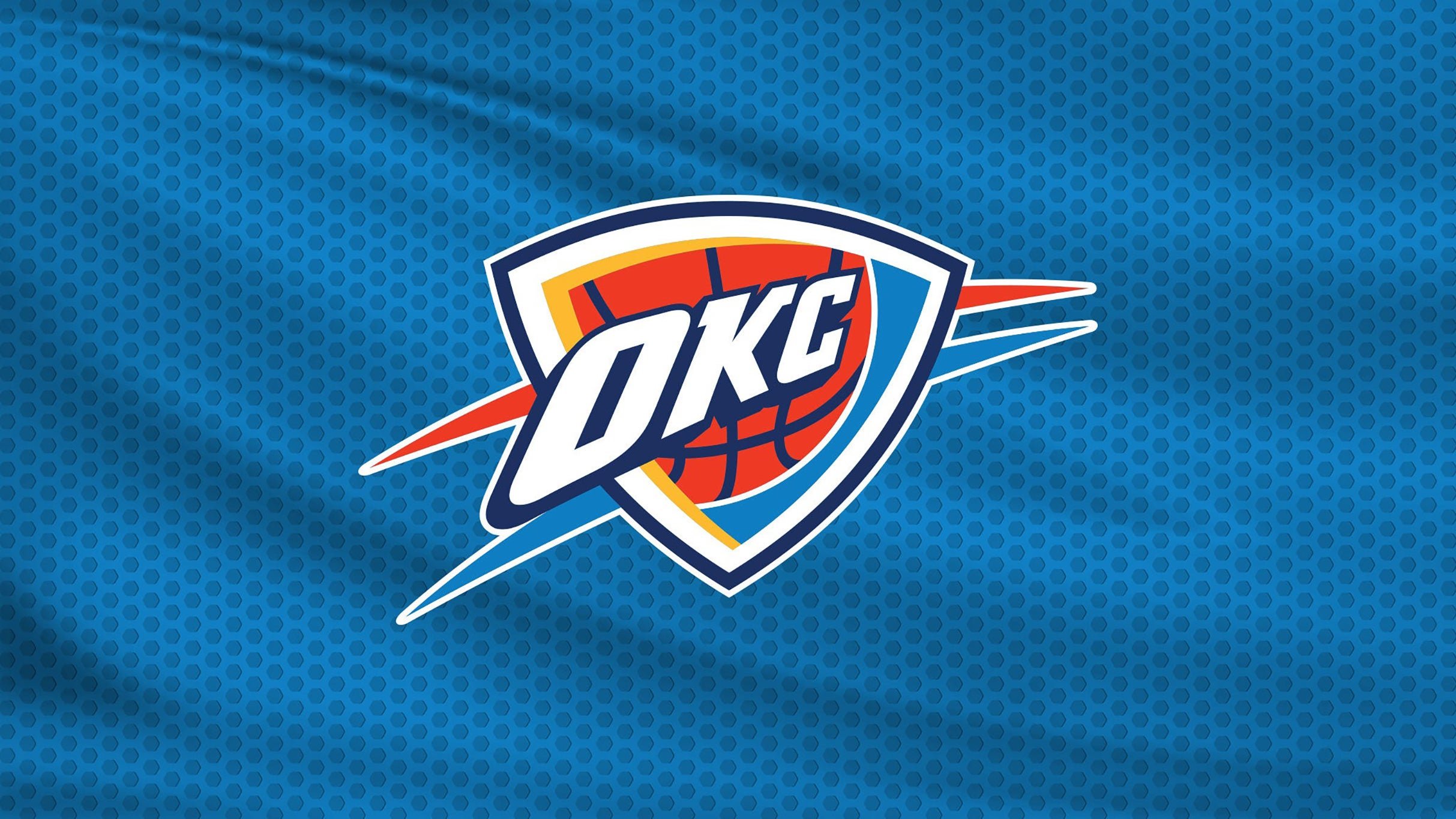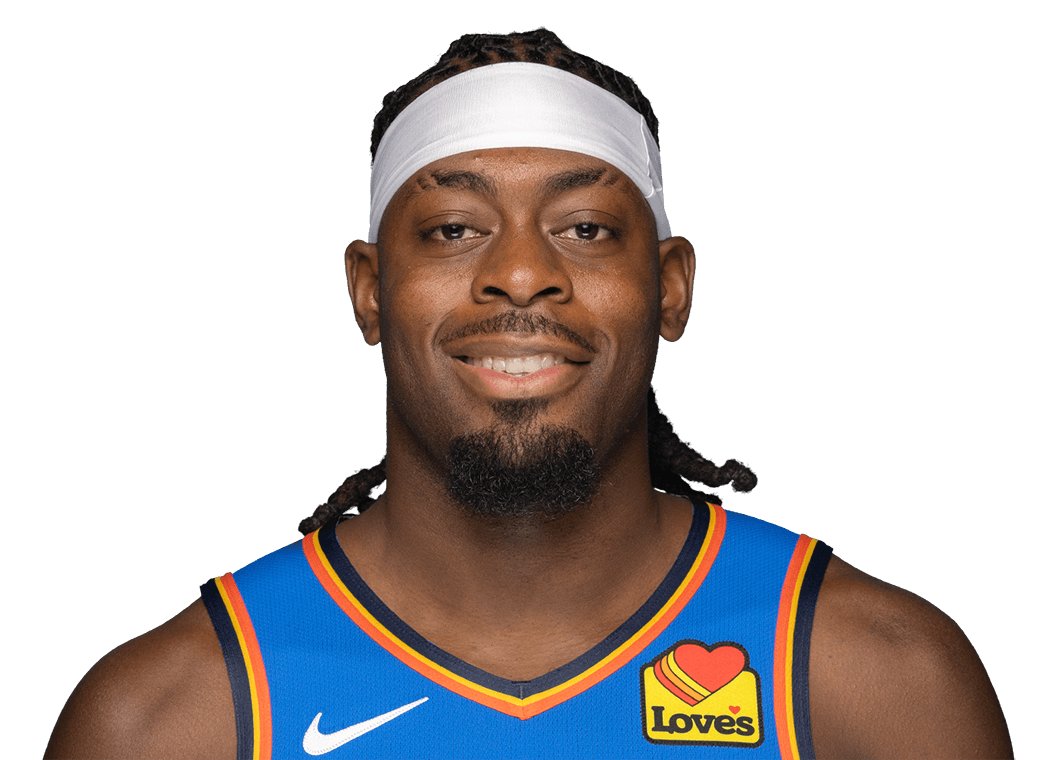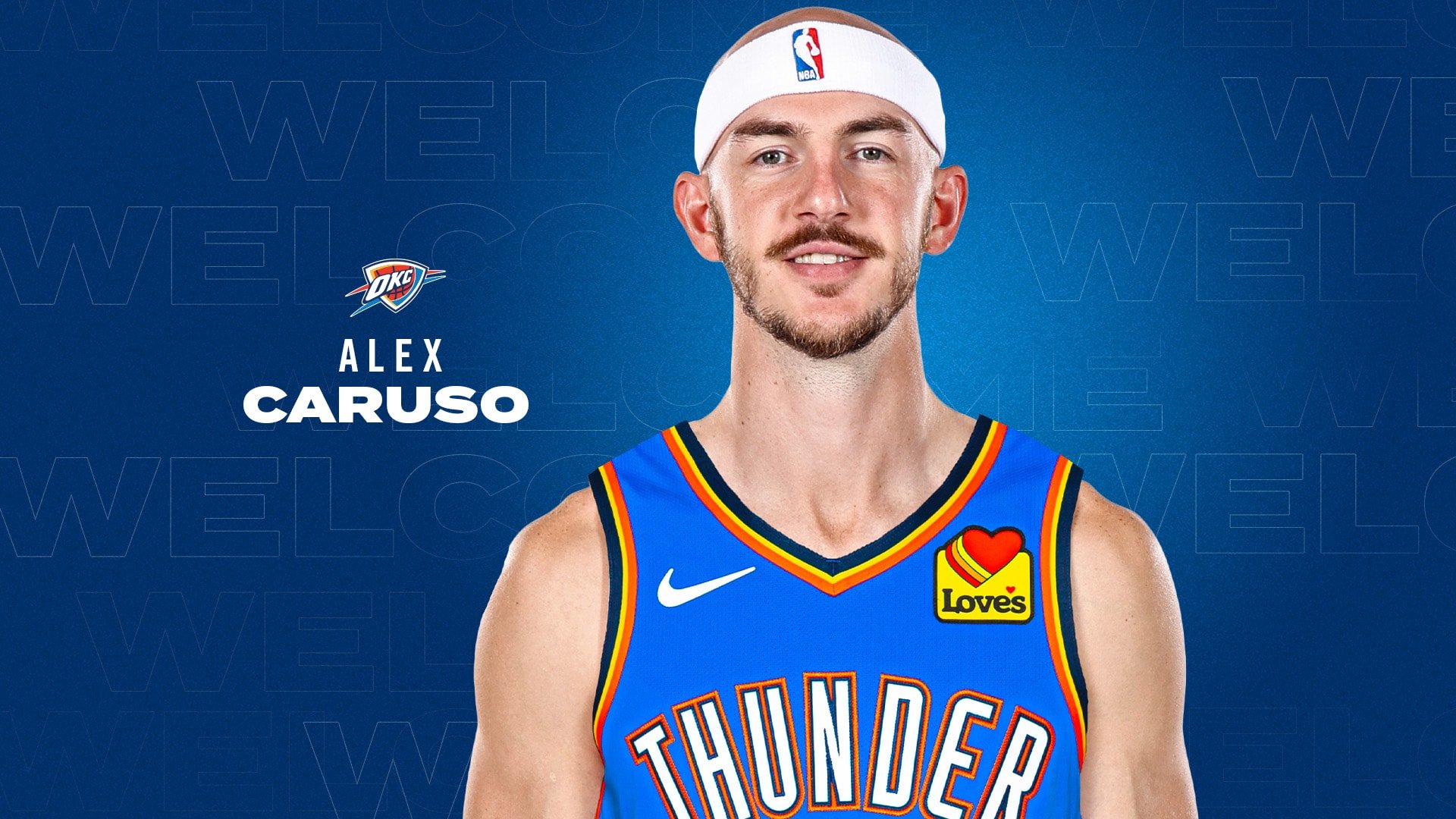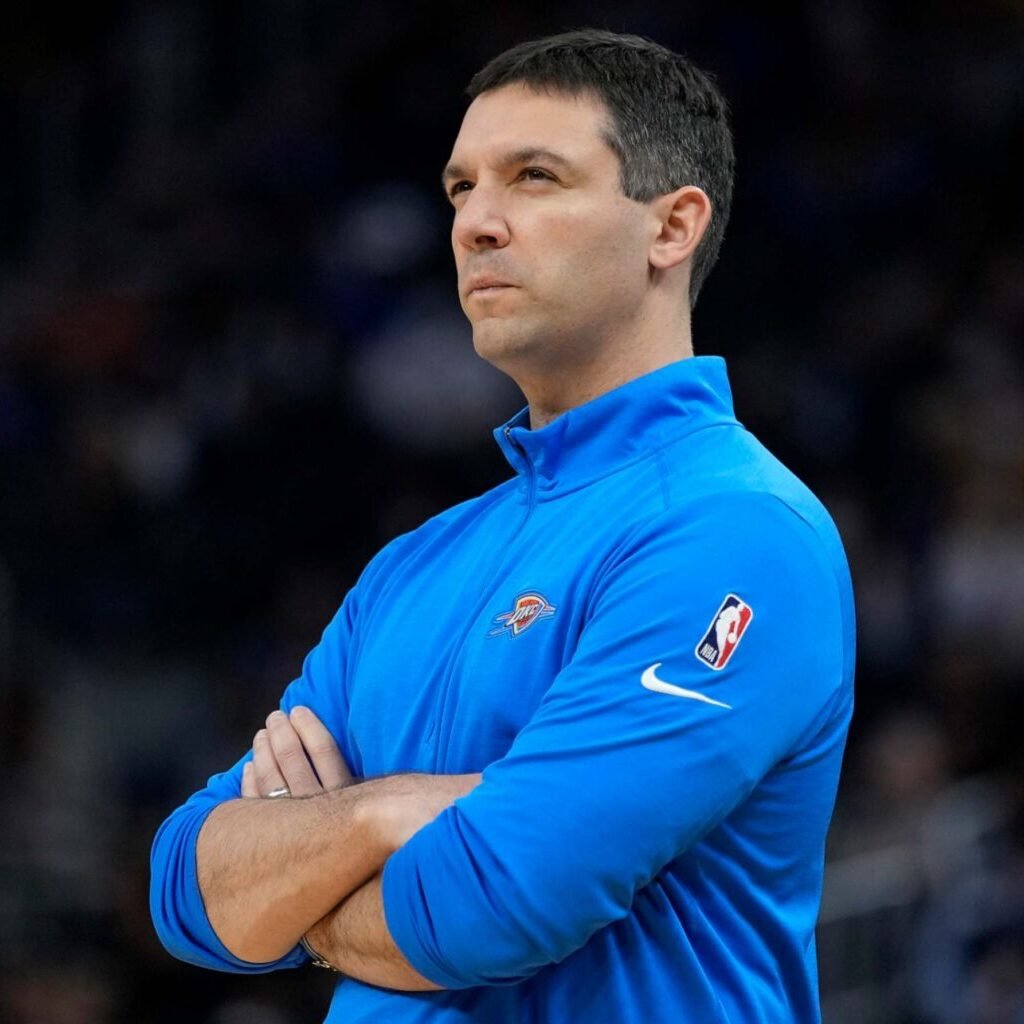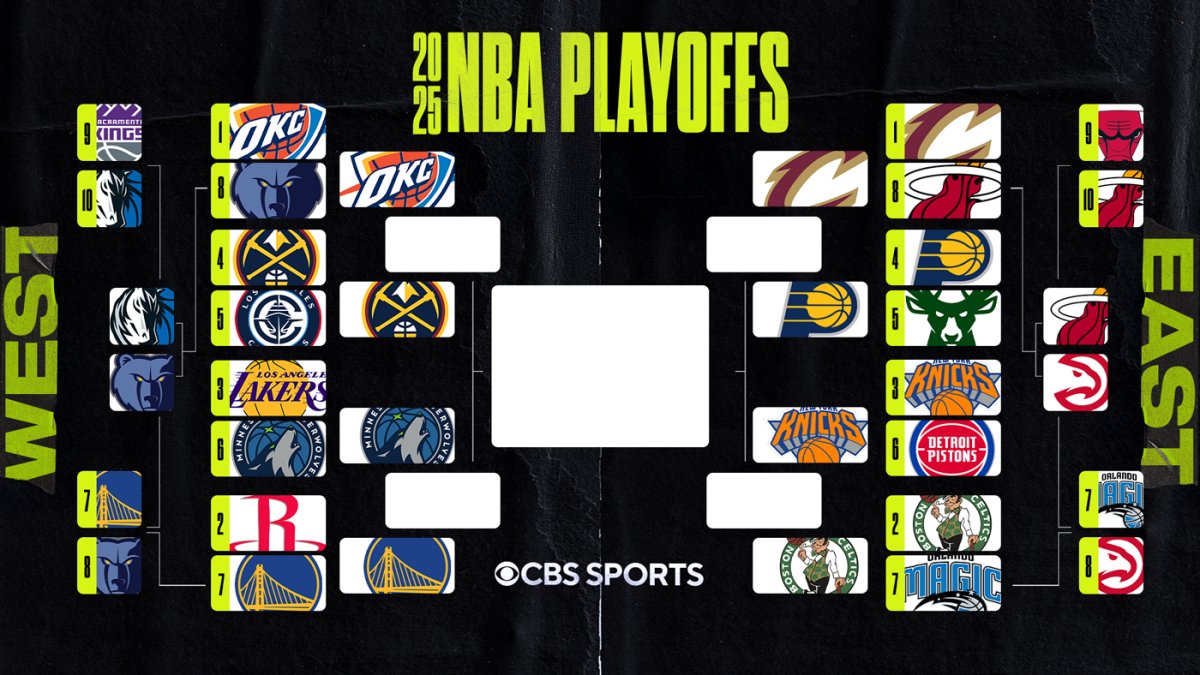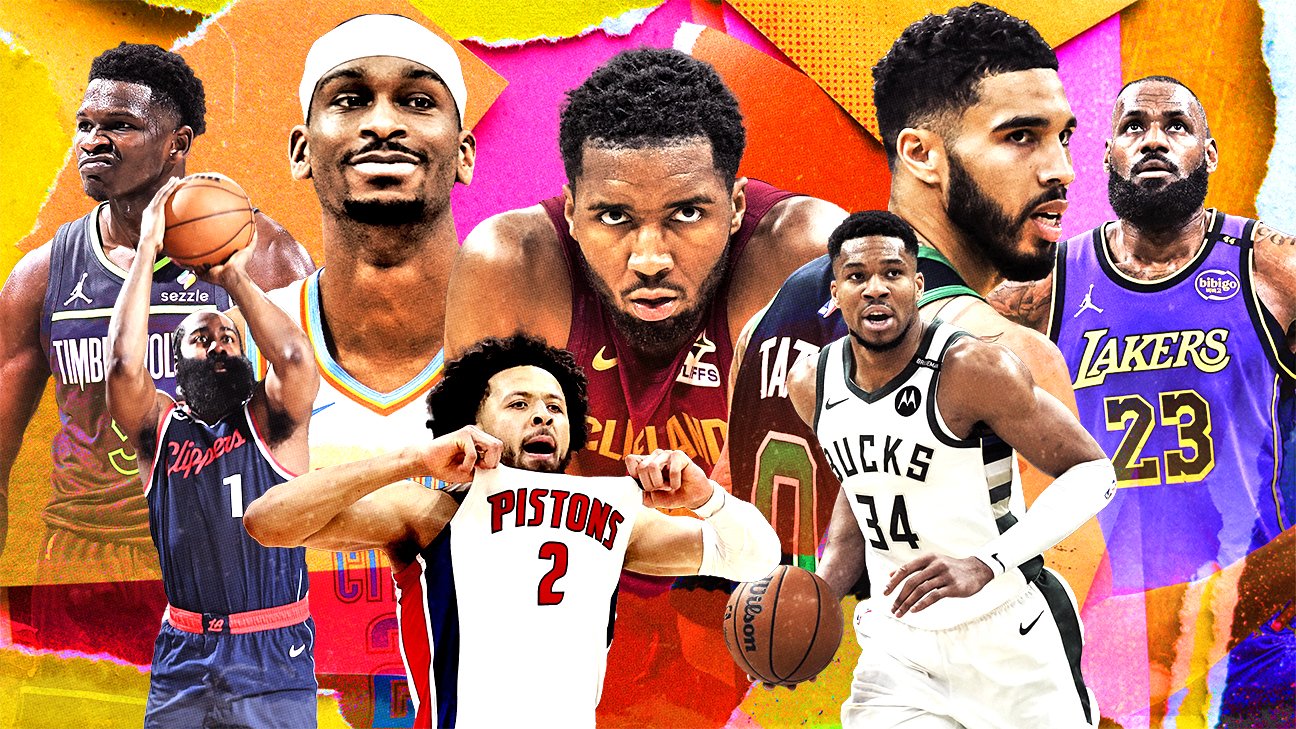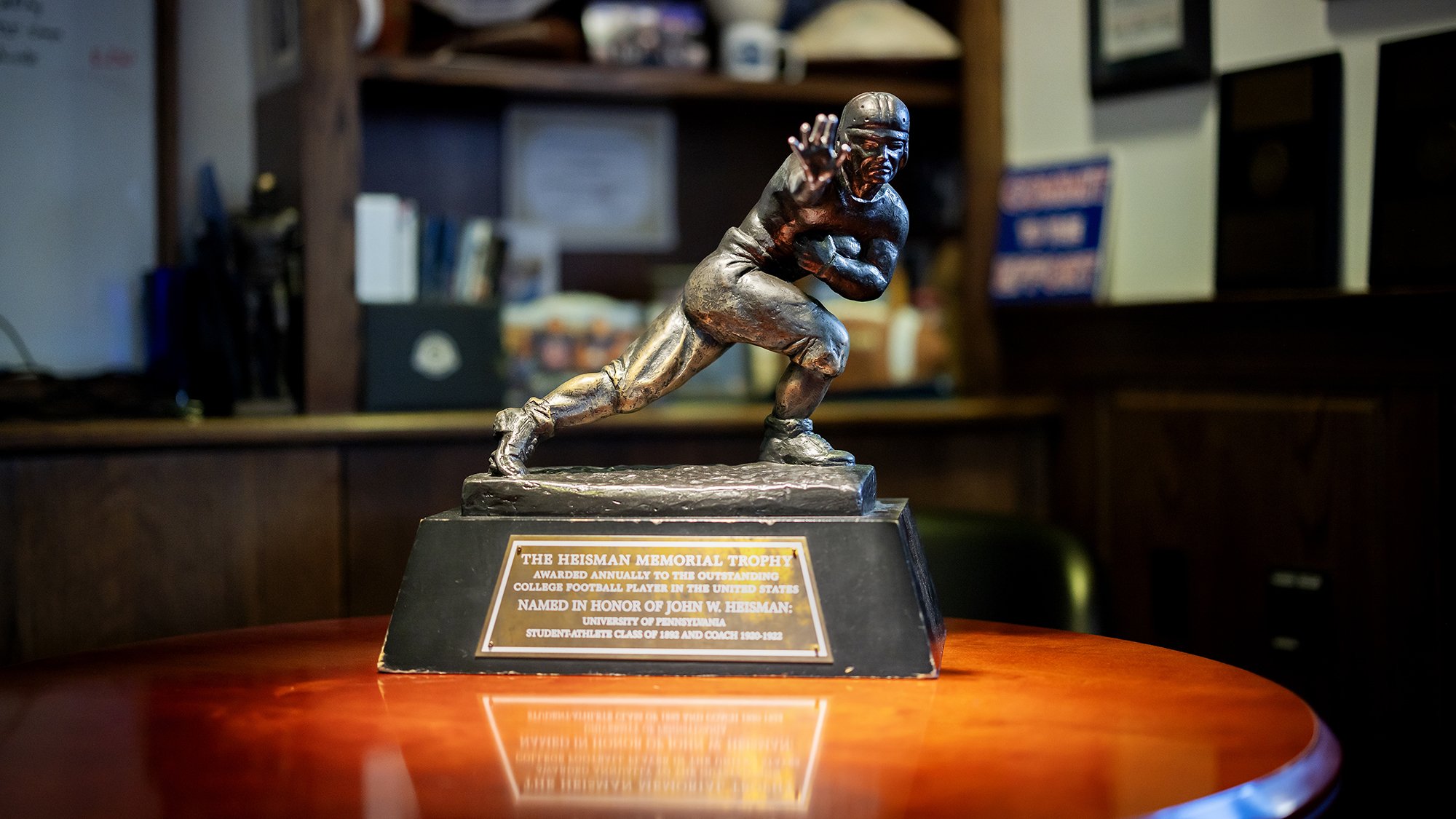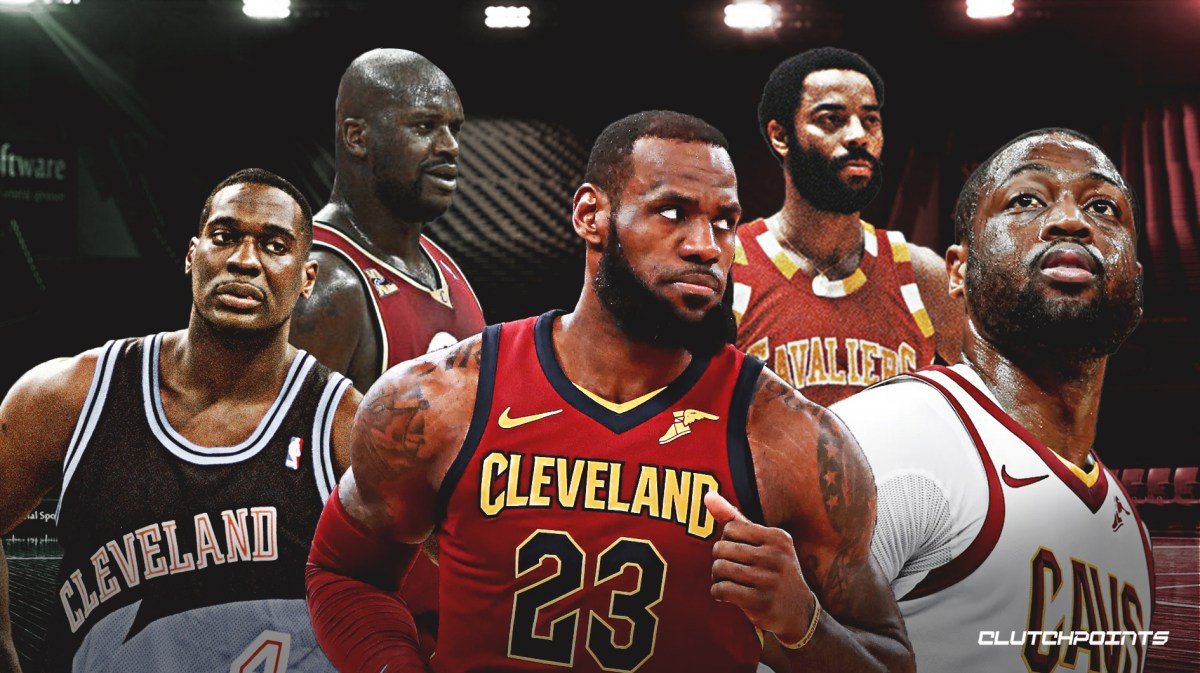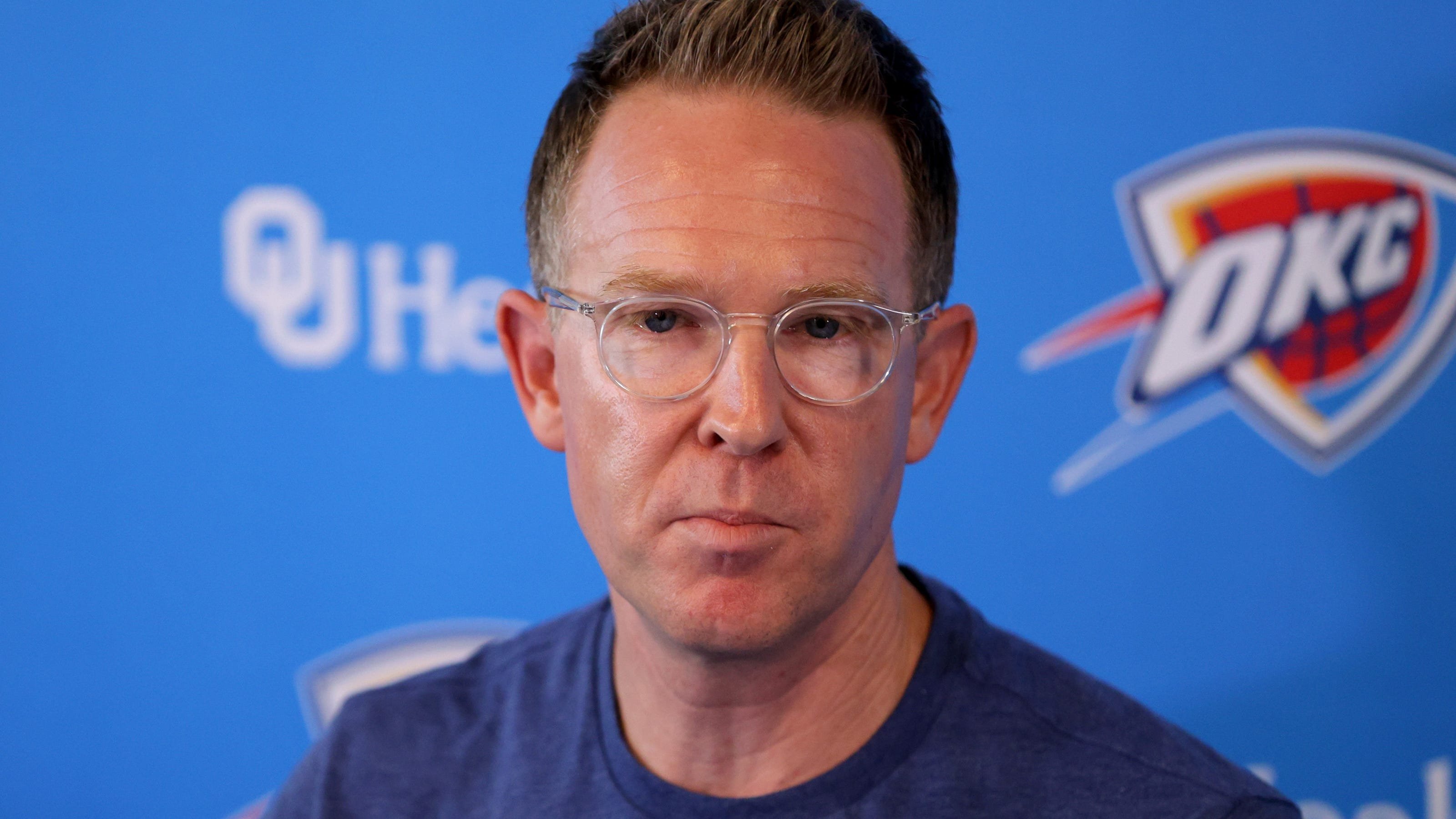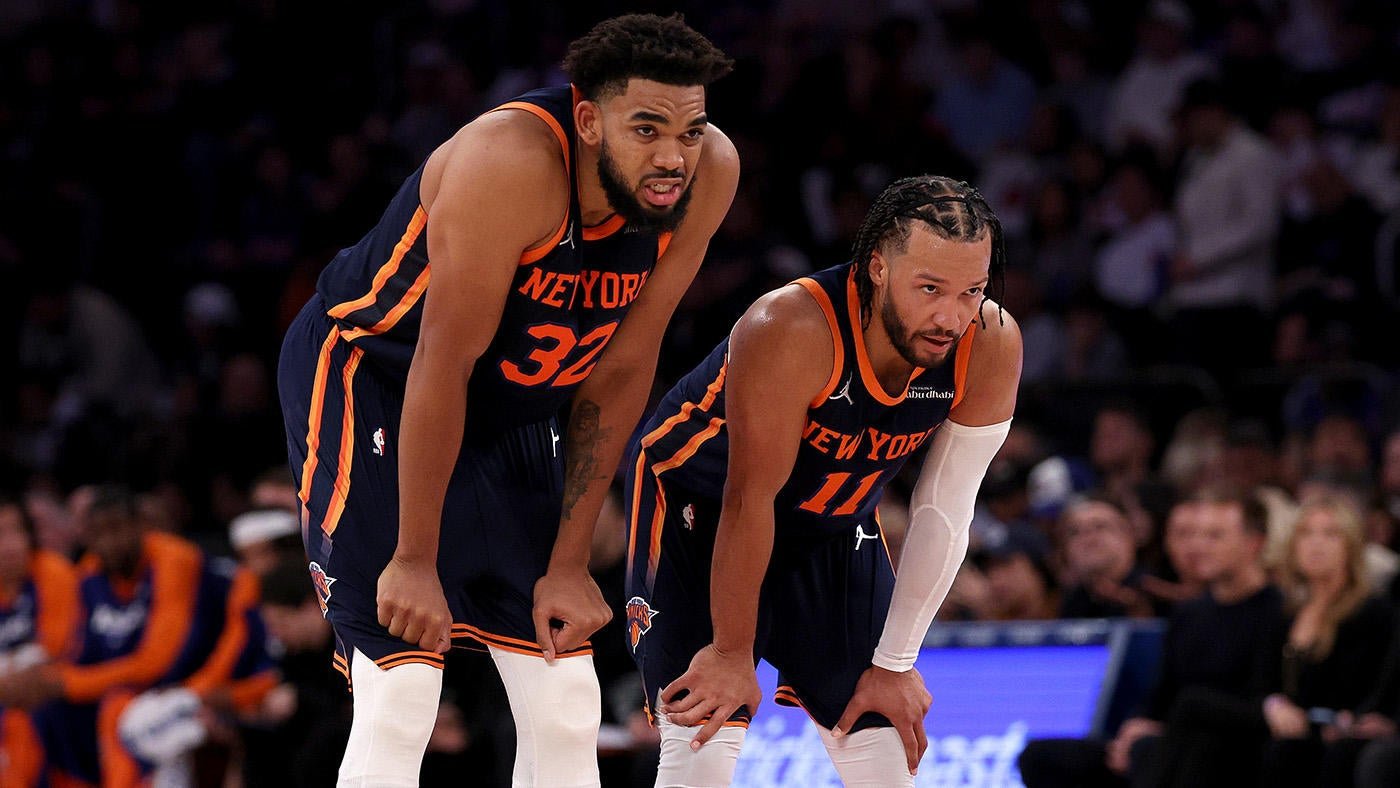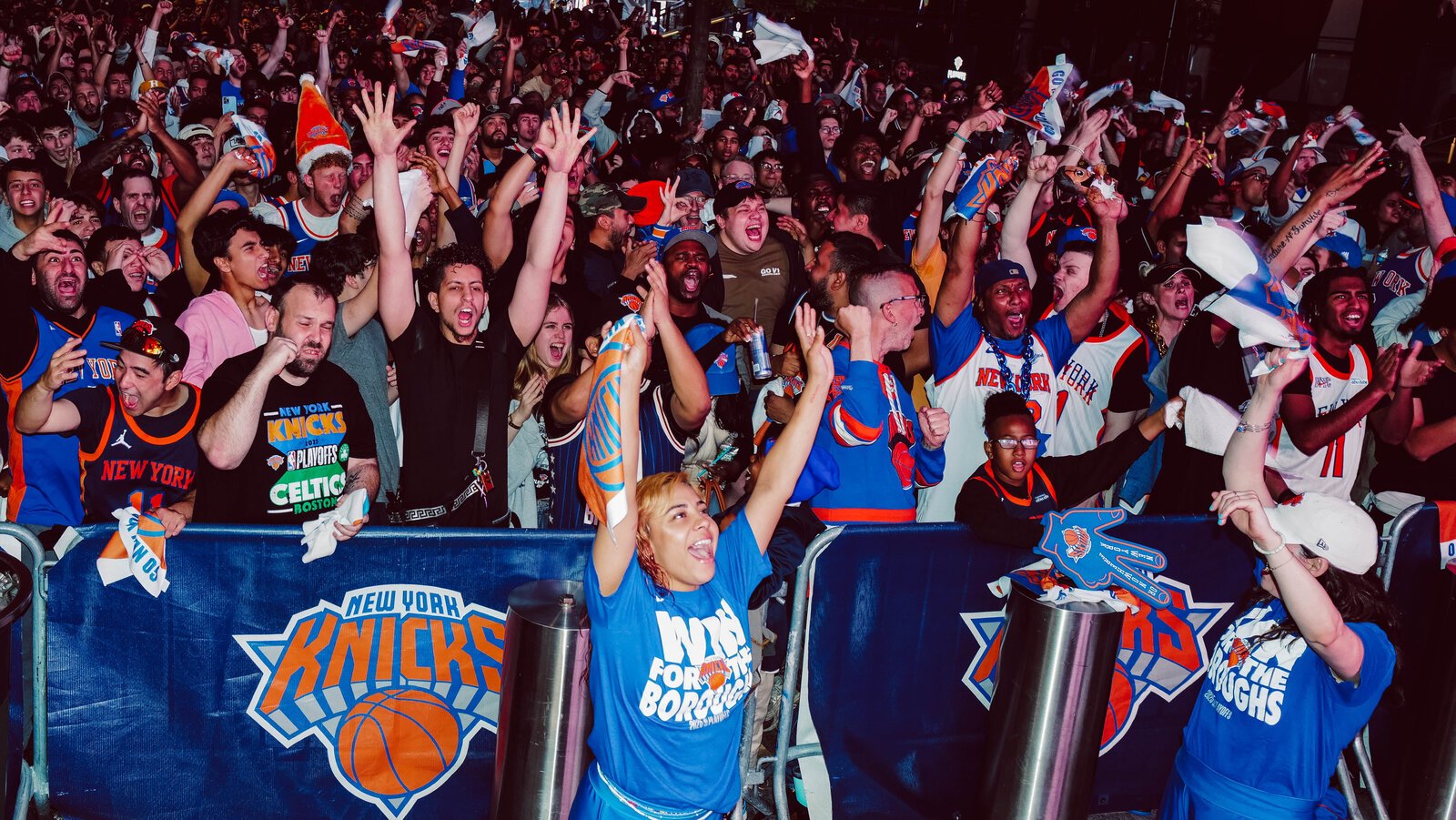The 2024-2025 NBA season has seen the Oklahoma City Thunder transform into the league’s most suffocating and dominant defensive team. With a franchise-record 68 wins and a defensive identity that stifles opponents, the Thunder have turned defense into their superpower, powering historic comebacks and playoff success. Fans and analysts alike have been tracking the Thunder’s rise, especially after a playoff sweep of the Memphis Grizzlies and ongoing battles in the Western Conference semifinals.
On the back of stellar defensive showings and with players like Shai Gilgeous-Alexander, Luguentz Dort, and Alex Caruso leading the way, Oklahoma City has developed into the team no offense wants to face. Their transformation has been strategic and collective, setting new standards for what a tenacious, connected NBA defense can achieve.
Thunder’s Turnover Frenzy Stifles Opponents
Throughout the season, the Thunder’s defense has been defined by its ability to force turnovers at a league-leading pace. Oklahoma City topped the NBA with an average of 17 forced turnovers per game and 10.3 steals, both marks setting league highs for the millennium.
That pressure takes a toll on opponents, making it tough for even experienced teams to settle into a rhythm. An aggressive mentality – swarming ball handlers, jumping into passing lanes, and rotating quickly – has resulted in more points from opponents’ mistakes than any other NBA team. These turnovers directly spark fast breaks and set a tone early in games.
Turnovers aren’t just accidental with the Thunder; their schemes are designed to pounce on any hesitation. Coach Mark Daigneault consistently pushes his team to press and trap with purpose. When they double, it’s calculated, not desperate, which keeps opposing players off balance and limits clean looks at the basket.
- 10.3 steals per game (league leader)
- 17 turnovers forced (league leader)
- 21.8 points off turnovers (league leader)
The effectiveness of this approach was on display during game three of the Memphis playoff series, where the Grizzlies registered more turnovers than made shots in the second half, a clear testament to Oklahoma City’s relentless defensive mentality.
Luguentz Dort: The Unsung Defensive Anchor
Luguentz Dort’s role in the Thunder’s defense is unique and irreplaceable. Despite being just 6-foot-4, Dort is tasked every night with guarding the best perimeter scorer on the opposition. His blend of strength, lateral movement, and anticipation allows him to disrupt and deny superstars possessions nobody else can.
Dort finished fourth in Defensive Player of the Year voting, but his greatest value isn’t always visible in basic box scores. According to NBA Advanced Stats, Dort held opponents to only 0.69 points per isolation possession, highlighting his ability to shut down one-on-one plays – often the mark of a true stopper.
Teammates and coaches routinely praise Dort’s determination and physicality. Opposing teams try to run screens to get their stars away from his coverage, but his rare ability to get skinny and fight through contact keeps him glued to his assignment. “There’s not many guys as big and as strong as Lu that could move as well as he does laterally,” Gilgeous-Alexander told ESPN.
The Oklahoma City community takes pride in Dort’s effort, and there is visible frustration when national awards don’t reflect his critical importance to the Thunder’s defense. He may not have an All-Defensive team selection, but within the locker room and among NBA peers, Dort’s value is never in question.
Shai Gilgeous-Alexander’s All-Around Impact
Shai Gilgeous-Alexander, widely recognized for his offense, has also quietly become a defensive force. He led the NBA with 150 steals during the season and regularly posts numbers combining steals and blocks rarely seen for guards.
Gilgeous-Alexander often takes less demanding on-ball assignments, allowing him the freedom to act as a sort of “defensive free safety.” This has let him step into passing lanes, rotate as a help defender, and generate transitions from defense to offense.
His defensive prowess is as much psychological as it is physical. Opponents know they can’t relax when he’s lurking, and his instincts for timing and reading ball movement affect how teams execute their offense. Multiple Thunder players point to his work rate and commitment as the tone-setter for their entire defensive approach.
Though only finishing seventh in 2023-2024’s DPOY balloting, Gilgeous-Alexander’s impact goes far beyond single metrics. His willingness to put in the work defensively, even as his scoring load increases, is core to the Thunder’s “no let-up” identity.
Alex Caruso’s Arrival and Defensive Energy
The offseason addition of Alex Caruso, acquired via trade from the Chicago Bulls, elevated the Thunder defense into a new stratosphere. Caruso is known league-wide for his energy, anticipation, and willingness to make the hustle plays that rarely show up in highlights.
Caruso came in as a decorated defender, having just made the NBA’s All-Defensive first and second teams in consecutive years before joining Oklahoma City. Yet, he instantly fit into the Thunder culture, bringing a leadership that focused on effort and reading the game as it unfolds.
He excels in “in the gaps” defense, using his hands to force turnovers and stopping drives before they reach the paint. Coaches deploy Caruso as a wild-card stopper, often blitzing pick-and-rolls or pestering top ball handlers into mistakes. His style complements Dort’s physical on-ball presence and Gilgeous-Alexander’s instincts.
Within the locker room, Caruso is well respected, and his voice is one of the loudest when it comes to accountability and defensive communication. His attitude quickly rubbed off on the younger Thunder players, helping tighten their rotations and increasing the overall defensive buy-in.
This season, Caruso’s ability to read opponents’ intent and gamble at the right times made Oklahoma City’s defense more unpredictable and difficult to score against, particularly when he comes off the bench to change the energy and pace.
Isaiah Hartenstein and Chet Holmgren: The Rim Protectors
The Thunder addressed a crucial need in the paint by adding Isaiah Hartenstein via free agency, pairing him with second-year sensation Chet Holmgren. Both players are key to the team’s strategy of protecting the rim without constantly sending extra defenders.
Holmgren, despite missing time with a fractured pelvis, remains one of the league’s best shot blockers. His length and timing help deter drives, forcing opponents to settle for uncomfortable floaters or tough jumpers rather than layups. When healthy, his ability to alter shots is unmatched among young big men in the NBA.
Hartenstein brings a more traditional physical presence. When facing dominant centers like Nikola Jokic, the Thunder have confidently shifted to let Hartenstein handle more of the low-post wrestling, freeing Holmgren to roam and provide weakside shot-blocking.
The partnership between Holmgren and Hartenstein gives Coach Daigneault more options in scheme versatility, from going big to keep the paint protected or playing small and relying on speed. There isn’t a soft spot to attack, and both bigs buy into the team’s core value: trust in defensive help and communication.
Whether paired together or rotating separately, these two rim protectors seal gaps while guarding pick-and-rolls, and provide the backline that allows Thunder’s perimeter defenders to be aggressive, knowing they’re covered if someone gets beat.
Cason Wallace and Jalen Williams: Emerging Defensive Stars
Oklahoma City’s defensive rotation has been further strengthened by the development of Cason Wallace and Jalen Williams. Despite their youth, both players are already known for their competitive edge and instincts on defense.
Jalen Williams typically draws the second-toughest assignment, showing a willingness to compete against elite scorers. His anticipation, size, and quickness give the Thunder another weapon to throw at perimeter threats, and his confidence has grown with each game.
Wallace, meanwhile, provides instant pressure when he comes onto the floor. His “in the gaps” defense makes him a disruptive force, capable of racking up steals and deflections. Caruso has even ranked Wallace as third among the Thunder’s “best of the pests,” a nod to just how quickly Wallace’s presence is respected on court.
- Both Williams and Wallace regularly switch on to top-tier athletes without a drop in intensity.
- Their emergence means there is little relief for opposing offenses – as the Thunder bench offers no weak link defensively.
The development of these two defenders means Oklahoma City can keep constant pressure on opponents, regardless of matchups, and always have a fresh set of legs flying around the ball.
Scheme Versatility and Defensive Game Planning
Head coach Mark Daigneault and defensive coordinator Dave Bliss have crafted a flexible defensive system built around their roster’s wide range of skills. The Thunder do not stick to one approach – instead, they adjust nightly to exploit matchups and cover weaknesses.
Some nights see Oklahoma City rolling out two 7-footers to dominate the paint, while other matchups demand a smaller, swarming lineup that switches on everything. This versatility makes it nearly impossible for teams to get comfortable and target a single player or area on the floor.
Oklahoma City relies heavily on help defense. GeniusIQ tracking showed they brought a help defender on 77 percent of opponent drives – fifth highest in the league. When second defenders arrive, it’s deliberate, aimed at harassing rather than simply helping. This fuels the “controlled chaos” mindset the team thrives on.
The coaching staff emphasizes constant communication and knowing exactly where teammates will be. As a result, there are few instances where defensive rotations break down, which allows the Thunder to stay in front of shooters and force low-percentage possessions.
Swarming Tactics and Communication
“It felt like seven pit bulls out there. Not five.” That quote from Cavaliers coach Kenny Atkinson after an early-season blowout loss sums up the Thunder’s defensive reputation across the league. Their swarming approach is not just about effort; it’s about precision and shared awareness on every possession.
Players are constantly alert, with hands active to deflect passes or reach in without fouling. The Thunder rarely leave anyone stranded on an island, and defenders trust each other to rotate or collapse into the paint when needed, knowing someone will cover their spot.
This system requires an unselfish mentality and a willingness to fight for every loose ball. Oklahoma City’s players frequently credit each other for being locked in and matching intensity, which keeps all five defenders energized from opening tip to final buzzer.
Internal competition sharpens each player’s focus. As Alex Caruso described, “Iron sharpens iron.” When one defender turns up the heat, every other player has to match that level or risk falling out of the rotation – something nobody in this young team wants.
Also Read
2025 PGA Championship Predictions, Odds, Top Picks, and Betting Insights
Steals, Turnovers, and Fast Breaks Fuel Offense
An elite defense doesn’t just stop points – it creates them. For Oklahoma City, forcing turnovers is the opening act for one of the NBA’s most efficient transition offenses.
Every steal or forced turnover typically leads to a Thunder fast break, with Gilgeous-Alexander, Dort, or Williams pushing the ball. In the playoffs, the Thunder boosted their averages even higher, turning 10.8 steals per game into 26.3 points off turnovers during the first-round sweep over Memphis.
These fast-break opportunities are often triggered by explosive sequences: a deflection, a scramble for a loose ball, and a kick-ahead pass to an open guard streaking for a layup. These moments demoralize opposing teams by highlighting how easily mistakes against the Thunder can turn into baskets the other way.
Oklahoma City’s ability to turn defense into offense is central to their game plan, as it allows them to maintain momentum while resting their half-court sets. It keeps every player engaged, knowing their effort is rewarded with easier looks at the rim on offense.
Also Read
NBA Playoff Player Props and Best Bets for Friday, May 9: Top Picks for Indiana vs Cleveland and Nuggets vs Thunder
Fast breaks are not just a bonus – they have become the pulse of how Oklahoma City builds and sustains leads, often swinging games within the span of a few plays.
Adjustments Against Elite Competition
Throughout the playoffs, the Thunder’s defense has faced stern tests from some of the game’s best offensive talents. The Western Conference semifinals against the Denver Nuggets, led by three-time MVP Nikola Jokic, have required Oklahoma City to make critical adjustments on the fly.
In the opening games of their series, Jokic appeared to target weaknesses, but the Thunder’s staff responded by switching primary defensive assignments. Isaiah Hartenstein and Jaylin Williams took on Jokic in the paint more often, reducing the wear and tear on Chet Holmgren and giving Oklahoma City a bigger physical presence inside.
Coach Daigneault often says their main improvement comes not from dramatic tactical changes but simply being sharper and more disciplined. Still, the Thunder’s willingness to try new matchups – in some cases doubling on certain post touches or sending aggressive help at different moments – shows a level of trust and buy-in from the full roster.
Also Read
2025 NBA Playoffs Second Round Schedule, Bracket, and Key Dates
In addition, perimeter defenders adapt game-to-game, fine-tuning coverages against shooters and recognizing when opponents are changing their offensive sets. This ability to adjust on the fly reflects a high collective basketball IQ.
Thunder’s Defensive Statistics and League Context
The Thunder’s regular season numbers underscore how far they have separated themselves from the pack defensively:
- Best point differential in NBA history (+12.9 per game)
- Defensive rating improved to 106.6, nearly three points better than the next closest team
- Allowed more than two points per 100 possessions fewer than any other NBA club
The gap between Oklahoma City and the next-best defense was as wide as seen in nearly a decade. These numbers weren’t padded against weak opposition – much of their domination came against playoff-caliber teams and in high-pressure moments.
The advanced data tells an even clearer story. Steals and points off turnovers, both regular season and postseason, have hit heights not seen since the early 2000s. And their defensive rating gap between the first- and second-ranked teams is the largest by season’s end since 2015-16.
Also Read
Heisman Trophy Hopefuls for Every Top 25 Team Ahead of the 2025 College Football Season
For fans, analysts, and rival coaches, these numbers are more than just trivia. They point to a group with historic potential, and a template for future teams trying to blend youth, energy, and discipline into a dominant NBA defense.
Mindset and Locker Room Culture
The backbone of the Thunder’s success lies not only in schemes but in the competitive mindset cultivated in the locker room. Whether a veteran like Caruso or a rising star like Wallace, each player experiences the internal push to match their teammates’ effort and intelligence.
Players and coaches often speak about accountability as the norm. Everyone knows the system only works if each rotation is executed with energy and focus. The group’s energy feeds off even the smallest successes, like a tough deflection or a perfectly-timed switch.
Mark Daigneault emphasizes the ideas of “connectedness” and “iron sharpens iron.” The players’ competitiveness isn’t selfish – it’s the engine for daily improvement, whether in film sessions or crunch-time playoff moments.
Also Read
Cavaliers vs Pacers Game 3 Odds, Prediction, and Key Storylines as Cleveland Looks to Recover
There’s a real sense of pride in Oklahoma City’s locker room about building a defensive identity, especially among the younger roster. They know the league is now watching them as a model for how to mix individual skill with collective effort.
General Manager Moves and Defensive Identity
The Thunder’s rise to defensive dominance stems from a series of bold roster decisions by general manager Sam Presti. After a promising 2023-24 campaign saw Oklahoma City finish as the youngest No. 1 seed in league history but fall short in the second round, Presti moved quickly to target high-IQ defenders.
Trading for Alex Caruso and signing Isaiah Hartenstein in free agency gave the team instant maturity and accountability on defense. These veterans were brought in not just for on-court skill but for their ability to teach and raise the standards for younger teammates.
- Drafting and developing defenders like Cason Wallace gave the Thunder a pipeline of energy for years to come.
- Continuing to build around Shai Gilgeous-Alexander, with an eye toward complementary stoppers, has been the foundation of the Thunder’s strategic long-term planning.
Each acquisition and draft pick has centered on defensive fit and mentality. The result is a roster without weak links, built to weather regular season and playoff storms alike.
Also Read
Jalen Brunson: Breaking Down What Makes the Knicks Star the NBA’s Most Clutch Scorer
Playoff Statement: From Comebacks to Clamping Down
The 2025 NBA Playoffs have showcased the Thunder at their swarming best. Their first-round sweep of Memphis was punctuated by a 29-point comeback in one of the all-time great defensive second halves – holding the Grizzlies to more turnovers than made field goals.
Against the Nuggets, Oklahoma City has continued to display the tenacity and resilience that defined their season. Wins haven’t always come easy, but when defensive focus sharpens, the Thunder consistently grab control of games with energy plays: a blitz leading to a steal, a rotation cutting off a driving lane, or a contested three missed because of relentless closeouts.
Fans have grown used to seeing the Thunder crank up their pressure when it matters most. It’s this defensive identity – one that doesn’t fade under playoff stress – that drives the team’s championship ambitions. Coach Daigneault summed it up after a statement win: “I didn’t really look at tonight as a response as much as I looked at tonight as just us being who we are.”
This is the Thunder’s brand of basketball, and as long as their defense is the calling card, no opponent will look forward to facing them in the postseason.
